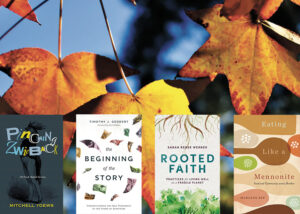In defense of dandelions
I feel compelled to suggest, in a brotherly fashion, that Brother Buddy Andres re-examine his “different strokes for different folks” stance vis-a-vis dandelions, in which he wishes for a heaven without dandelions (June 30, letters).
Is there a more splendid example of Compositae inflorescence than the dandelion? Is there a more enthusiastic, hardpan-busting taproot, that mines deep mineral deposits and brings fertility to tired soils, than dandelions?
How many dandelion bouquets are bequeathed to loving parents with no complaints from the gardeners?
May I humbly suggest that the Creator decided that dandelions have their place and are (very?) good, horticulturalists notwithstanding.
—Frederic Wieler, Oakville, Ontario
To sanction, or not
I commend you on your editorial of June 16 (“The duty of tension”), and its examination of Maxime Bernier’s platform and audience. Most of Canada’s media would not cover Bernier, unless they were forced to by circumstances, or had stumbled onto a particularly damning bit of information.
You also break ranks with the mass media by actually indicating some of Bernier’s platform. You state: “His appeal is simple: family values. He speaks about a ‘cult of death’, referring to abortion and medical assistance in dying.”
Bernier [leader of the People’s Party of Canada] is indeed a little scary, as he challenges the consortium formed by the three major political parties back in the ’60s. Those parties have all adopted an aggressive anti-family, anti-parent, anti-child, anti-female, anti-male, anti-heterosexual and anti-freedom of speech policy, and they sanction those who don’t emphatically agree with them.
—Kevin McCabe, St. Catharines, Ontario (Grace Mennonite Church)
The face of grace
I’ve been following the polarization dilemma for many years. It is unfortunate how divisive this has become in our churches and among families and friends. It is then with great appreciation that I read the editor’s thoughtful perspective on “The duty of tension” (June 16). Living gracefully together cannot happen without deliberate intent.
Will Braun makes a challenging statement when he says, “turning my face toward my neighbour reminds me of the duty of tension.” We have a reminder of this also in the age-old priestly blessing: “The Lord make his face shine upon you and be gracious to you; the Lord turn his face toward you and give you peace.”
Being gracious to each other may be a perspective we can all endorse.
—Walter Paetkau, Abbotsford, B.C. (Langley Mennonite Fellowship)
Indigenous to Israel?
Further to “Not talking about politics in the Holy Land” (June 16) and the reply from Honest Reporting Canada in the letter, “Israel is not a ’settler-colonial’ state” (June 30), I think the letter’s statement that Israel is the “indigenous homeland” of the Jewish people is a bit of a stretch. The land was occupied when Israel began its post-Exodus conquest. The biblical details of that conquest, involving the goal of a complete eradication of the existing population down to every “man, woman and child,” is hard to read without some emotional discomfort.
Furthermore, the fact that Christianity, for the most part, has accepted that brutal usurpation of land as God’s will and doing should be pause for reflection. Is it any different from that which was mandated by the Doctrine of Discovery?
—Hugo Peters, Winnipeg (Bethel Mennonite Church)
A short history of hymn books
I very much appreciated Anneli Loepp Thiessen’s “Voices and Stories” column about the hymnody in Voices Together. The background stories give life to the hymns.
It continues to amaze me how putting new words to an old tune brings a new life to the hymn. A good example is the first hymn in Voices Together, “Summoned by the God who made us.” It also gives me cause to ponder how and why the opening hymns for our series of hymnals were chosen. Our hymnody is our singing faith, and these anchor songs at the beginning of a hymnal point to purposes, arrangement and themes that follow.
The Church Hymnal (the black one, 1927) begins with, “Come Thou Almighty King.” Verse four concludes with the assertion: “To the great one in three, eternal praises be.” Sections on God, Christ and the Spirit follow. Clearly trinitarian theology was consciously included.
The Mennonite Hymnal (red, 1969) starts with, “Holy God, We Praise Thy Name.” Verse four begins with, “Holy Father, Holy Son, Holy Spirit, three we name Thee.” The hymns which follow are arranged with respect to the persons of the Trinity.
Then something changes. In Hymnal: A Worship Book (blue, 1992) the contents are arranged according to the order of service in worship, not theological themes. The Trinity was no longer the cohering principle. The opening song, “What is this Place,” seems to be a disclaimer about specifically sanctified worship spaces, then goes on, nonetheless, to make significant statements about how we connect with the sacred even in this ordinary common place.
Voices Together (purple, 2020), begins with the summons to gather as God’s people “in all our rich diversity, richer still in unity,” thus bringing a new church into being, a church of justice, peace and inclusivity. The focus is perhaps less on orthodoxy (right belief) as it is on orthopraxy (right actions and relationships). No doubt the hymnal contains both aspects as a unified whole in this version of our singing faith.
—Maurice Martin, New Hamburg, Ontario (Mannheim Mennonite Church)
Intergenerational trauma?
In reading “Project explores legacy of 1920s trauma on Mennonite women” by Sherry Sawatzky-Dyck (June 2), I was struck by the lack of the usual symptoms of generational trauma (addiction, violence, general anti-social behaviour, keeping children out of gangs and criminal involvement) among female descendants of Mennonites who came to Canada in the 20s.
Perhaps sorting out the past can also involve recognizing the strength of faith, community and family as significant factors in avoiding these “usual” symptoms of trauma. These mothers and grandmothers exhibited loving kindness, care and compassion in spite of terrible events in their lives. The author did not seem to find that their trauma transmitted through the generations. It seemed to have stopped.
Perhaps living a life of faith and in a faith community, while not the perfect medicine, may be strong medicine to alleviate intergenerational trauma. Surely this is good news.
—David Johnson, Kitchener, Ontario (First Mennonite Church)
Editor’s Note: We asked Sherry Sawatzky-Dyck to respond.
I am mindful that my sample size of research subjects was very small. Initially I planned to only interview a small number of people, but I have decided to extend the project and increase the sample size to make some of my research more conclusive.
Similarly, I am just beginning the analysis of my data, so any conclusions are preliminary. I am currently researching other studies and articles on similar or parallel topics to help me better understand what I have found.
However, according to my research so far, plus anecdotally through my work as a psychotherapist, I have indeed found this lack of the usual trauma symptoms to be true.
The letter writer attributes this to faith, but cause and effect are very different. I think faith is a factor, but I wonder if faith community with an emphasis on “community” might be an even larger factor. This is a complicated issue. In my ongoing research for the next year or so, I plan to investigate the protective factors such as faith, community, etc. while also looking at those factors that have interfered with trauma recovery and wellness for this group.
—Sherry Sawatzky-Dyck, Brandon, Manitoba
Online
Depths of serenity
In response to “Rest and restlessness” (June 30): It’s been great to discover meditation. I feel certain it will take me further and further into the depths of serenity, as many say it will.
We rest the body, but do we really rest the mind? The world will never be fully at peace, near or far, but, in my belief, inwardly our peace can be continual and limitless.
I’m a novice at meditation, but already experience a deepening of joy, calmness and clarity. I think of it as better anchoring to the infinite, eternal Kingdom within. As a spiritual practice, there’s perhaps nothing higher.
—Howard Boldt, Osler, Saskatchewan
Our land
In response to an article about the land acknowledgement quilt at Fort Garry Mennonite Fellowship in Winnipeg (June 30):
The Mennonite land acknowledgement is simple: “we have your land and we are not giving it back.”
—Peter Reimer, Gretna, Manitoba










Leave a Reply
You must be logged in to post a comment.